This factsheet is about making sure people are safe in hospital and get the care and treatment they need.
Hospital staff sometimes need to stop people making a choice that would harm them.
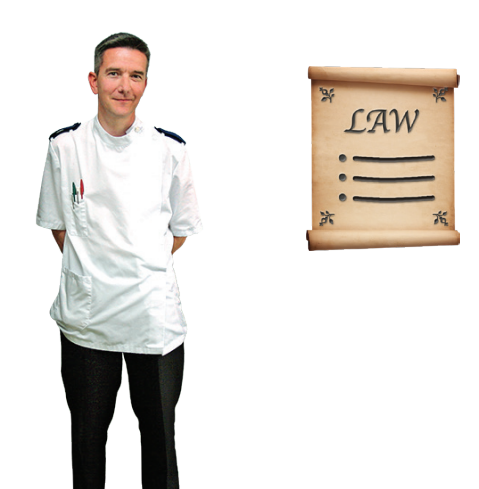
You can usually make choices about your care and treatment when you are in hospital.
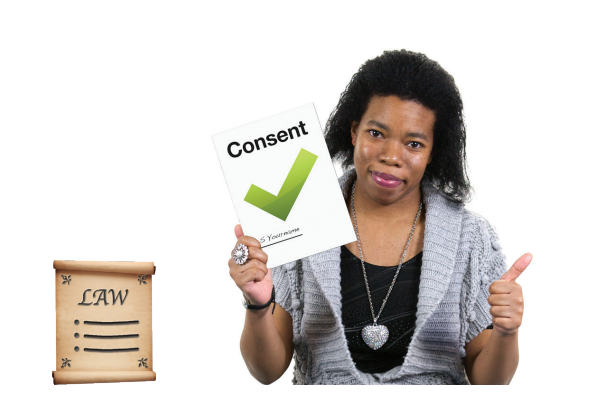
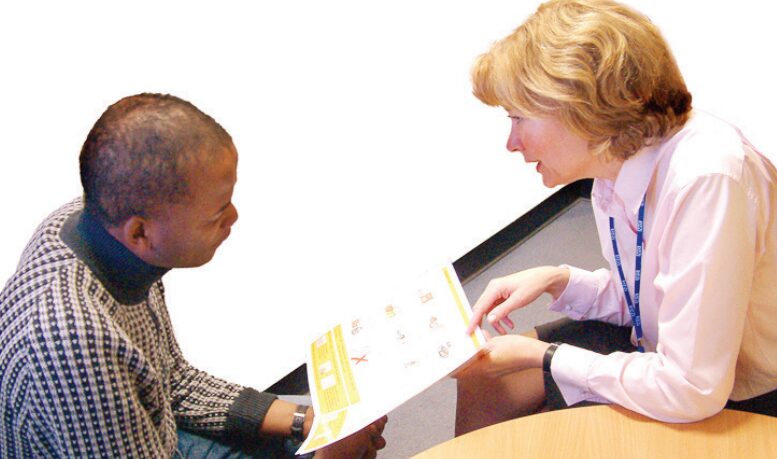
Sometimes people are not able to understand a choice about their care and treatment.

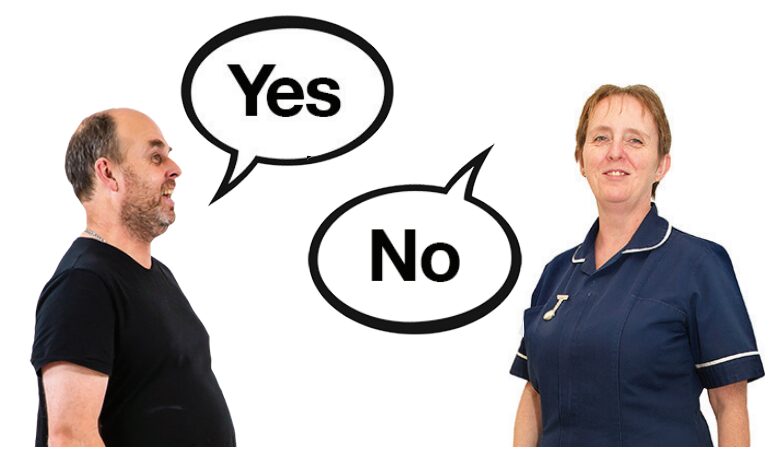
Hospital staff will only stop a person making a choice if it is the best way to make sure they get the right care and treatment.
Stopping you making a choice about your care and treatment is called a deprivation of liberty.
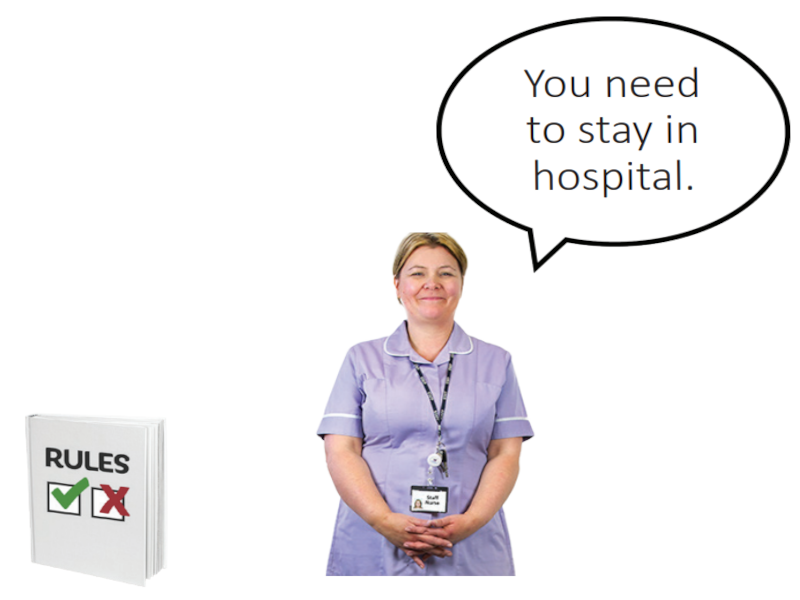
People must check that you lack capacity to understand the choice.

People must make a decision in your best interests.

People must think about less restrictive ways of caring for you.

An example of deprivation of liberty
Gareth is staying in hospital because he is very ill.
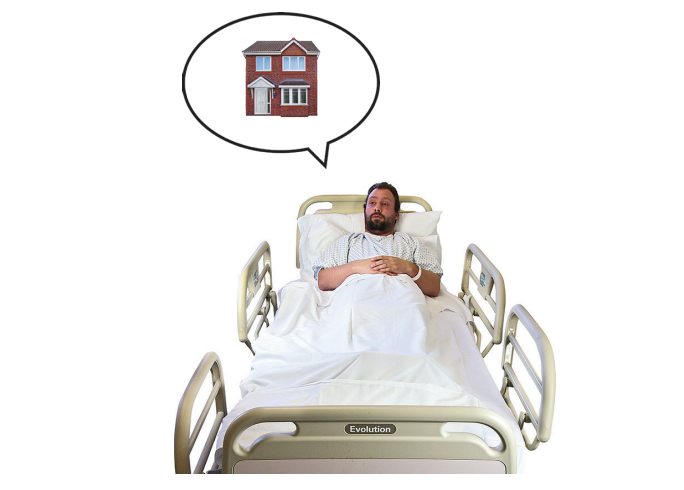

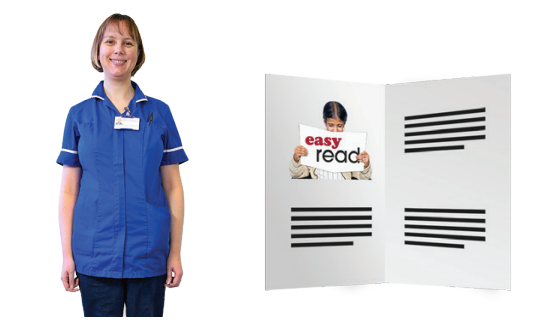

It has been agreed that Gareth lacks the capacity to choose if he should stay in hospital or go home.
The doctor needs to decide if Gareth should stay in hospital.

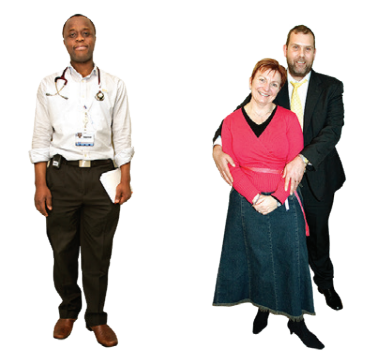
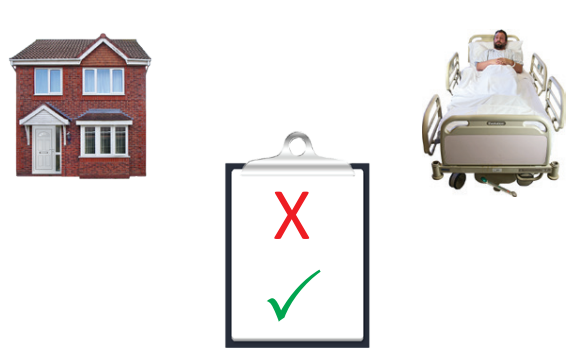

At the meeting everyone agrees it is in Gareth’s best interests to stay in hospital and get the care and treatment he needs.
Gareth has tried to walk out of the hospital to go home.
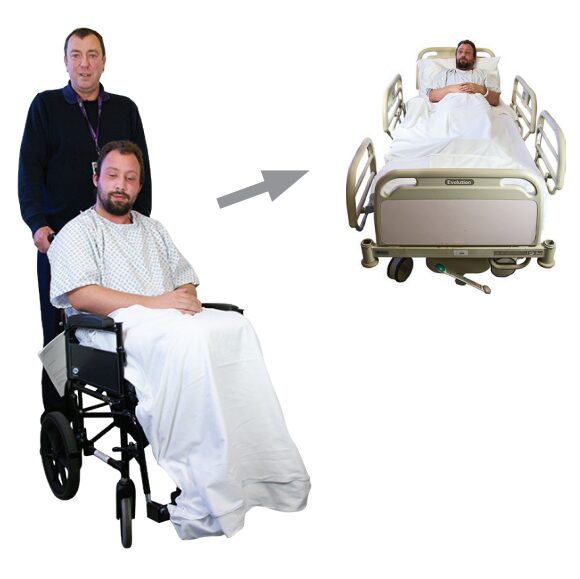

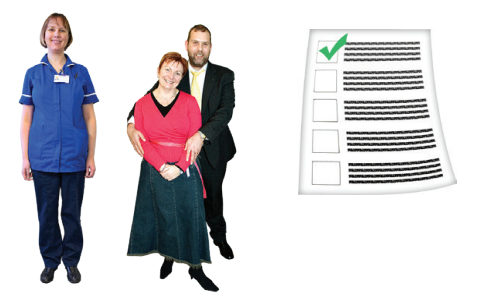
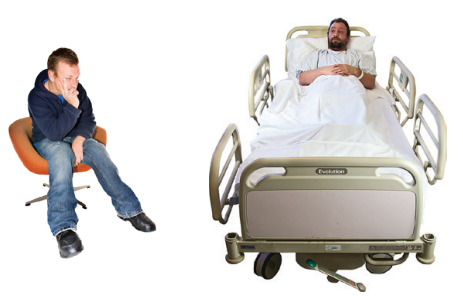
Before agreeing this everyone had to think if there was a way of keeping Gareth safe that was less restrictive and gave him more freedom.
Restraining someone is when you stop them doing things they want to do.
It is used when it is the only way to help a person stay safe and well.
There are different ways of restraining a person.
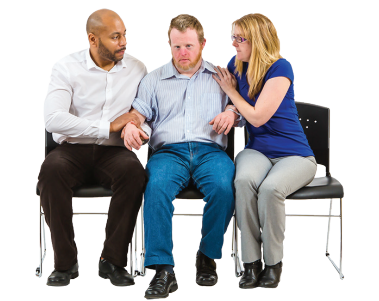
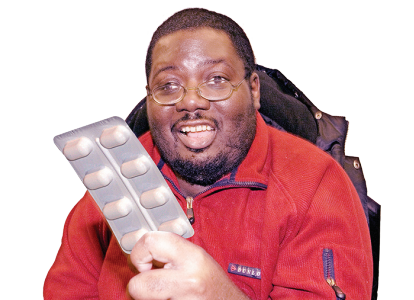


Rules about restraining people
Restraint should only be used when there is no other choice.
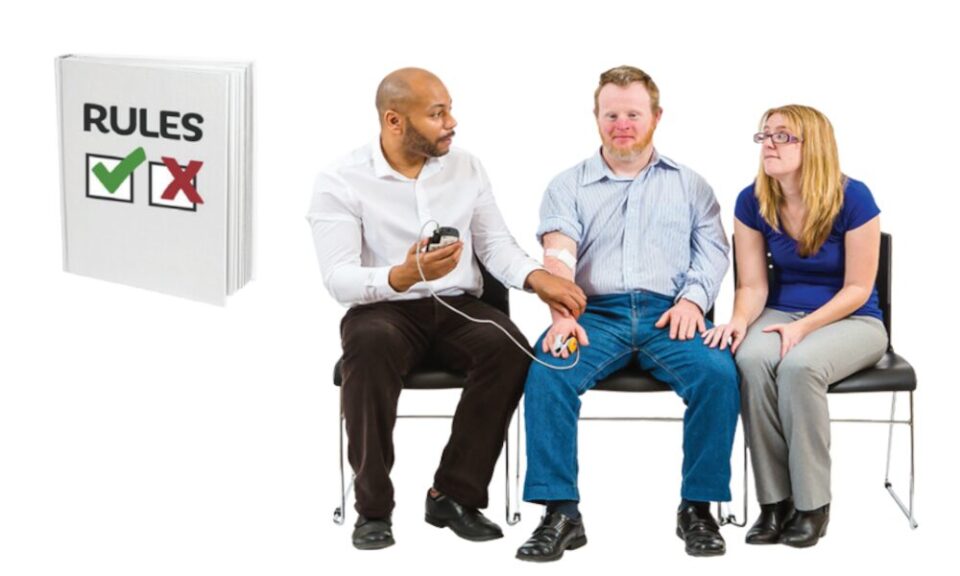
It is important that these rules are followed. They keep people safe.

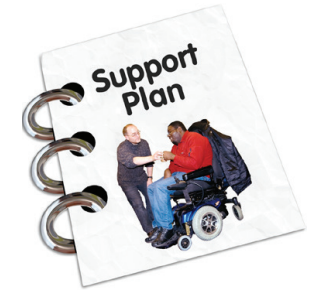

Examples of when restraint might be used
Andrew refuses to have a blood test
He needs to have a blood test to make sure he stays well. He is frightened and won’t let the nurse take blood from his arm.

Diane needs help to have a bath safely
She gets very confused and can’t wash herself. She doesn’t like to be helped and sometimes struggle when staff try to help her

Edwina keeps trying to take her oxygen mask off
She needs to have oxygen while she recovers from a health problem. If she doesn’t have oxygen she may become very ill.

Martha needs help to be able to walk safely
She tries to walk on her own, but her legs are not strong enough and there is a serious risk that she will fall over and hurt herself.
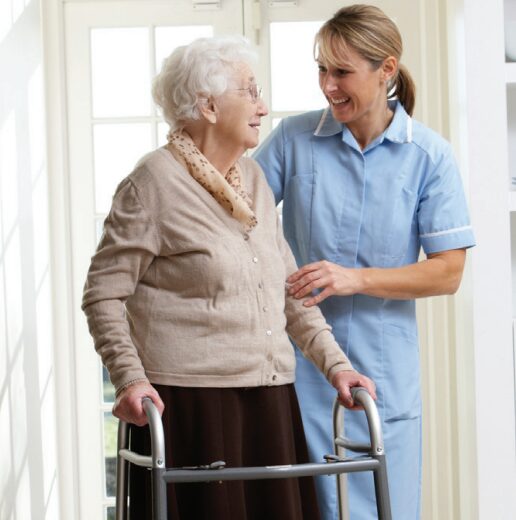
Deprivation of liberty safeguards
These are rules to protect you if you are stopped from making a choice about your care and treatment.

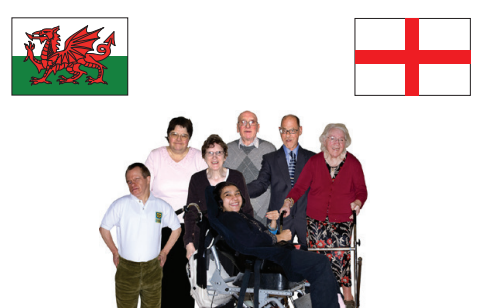
You will have a named person who can speak up for you.

The hospital will ask someone from the council to check that the right decision has been made for you.

The two people who visit you in hospital will talk to your friends and family. They will also talk to the doctors and nurses.


They will set a time limit on how long you can be stopped having a choice.


What to do if you are unhappy
You have the right to ask the council to review your case if you are unhappy with the decision.






Useful websites
Rotherham, Doncaster and South Humber NHS Foundation Trust

For more detailed information about deprivation of liberty
safeguards go to:

Document control
This factsheet has been adapted by Rotherham, Doncaster and South Humber NHS Foundation Trust from the original developed by the learning disability liaison service and the Mental Capacity Act practice development project lead at City Hospitals Sunderland, and funded by the Sunderland Clinical Commissioning Group.
Designed by The Clear Communication People Ltd. using photo symbols and other stock photography.
Page last reviewed: September 17, 2024
Next review due: September 17, 2025
Problem with this page?
Please tell us about any problems you have found with this web page.